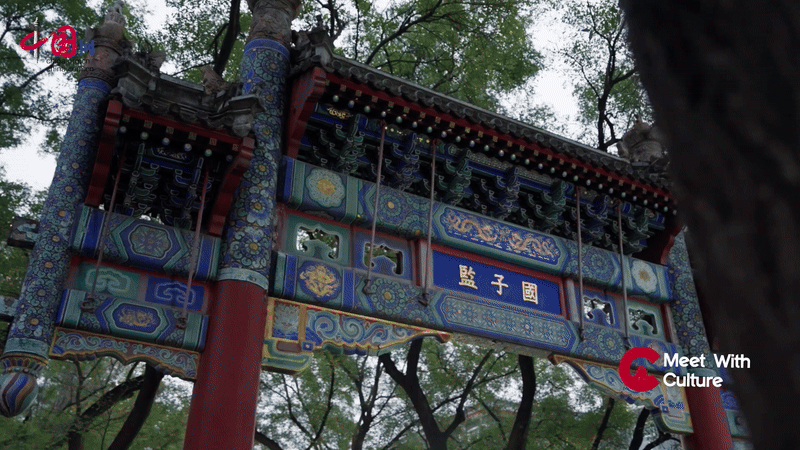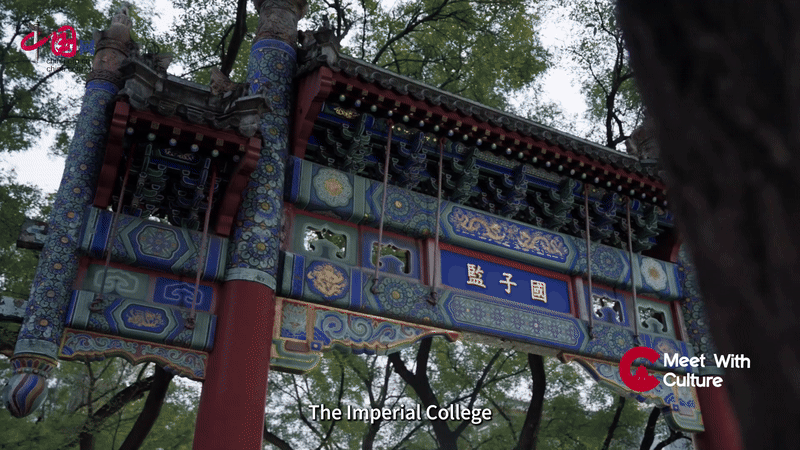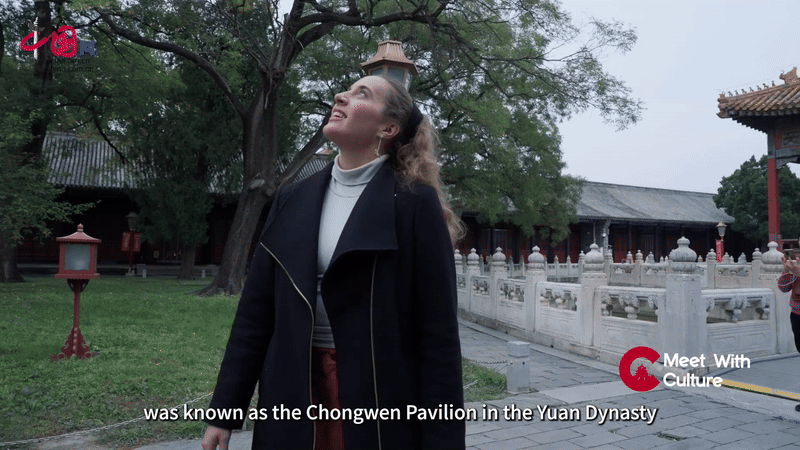We will stay firmly rooted in Chinese culture. We will collect and refine the defining symbols and best elements of Chinese culture and showcase them to the world. We will accelerate the development of China’s discourse and narrative systems, better tell China’s stories, make China’s voice heard, and present a China that is credible, appealing, and respectable.
Meet With Culture | Imperial College: The Highest Institution of Learning in Ancient China
发布时间:2024-12-25 09:02:20 | 来源:中国网-中国习观 | 作者: | 责任编辑:曹川川This is a modal window.


Back to the Ming (1368-1644) and Qing (1644-1911) dynasties, it was once a sacred place for numerous students. As the highest institution of learning and educational administration at that time, the Imperial College has become an important symbol of ancient Chinese education culture with its long history and complete teaching system.


The Imperial College, located in Dongcheng District, Beijing, was first built in 1302, the sixth year of the Dade reign of the Yuan Dynasty, with a history of more than 700 years. It is the best-preserved site of the highest-level ancient educational institution in China.

The large glazed memorial archway inside the second doorway of the Imperial College is the only memorial archway built for the purpose of education in China. It symbolizes the social atmosphere of emphasizing culture and education in ancient China.

The Piyong Hall was the venue where the emperors gave lectures, which is the only existing one of its kind in China. Its layout manifests traditional Chinese philosophical ideas of “round outside and square inside” and “harmony of heaven, earth and humans”. In 1768, the 33rd year of Emperor Qianlong's reign in the Qing Dynasty, the government invested a large sum to build an auditorium used by the emperor to give lectures to teachers and students at the Imperial College. The story of “Giving Lecture in the Piyong Hall” depicts the grand scene of Emperor Qianlong giving a lecture in the Piyong Hall after its completion.
It wasn't easy to enroll in the Imperial College. It had a strict talent selection system, and candidates had to pass several exams before entering the Imperial College.
The Ming Dynasty inherited the education system of the Yuan Dynasty and further strengthened the function and organizational structure of the Imperial College. Through setting up several administrative positions, it enhanced the Imperial College's central role in the entire education system. In 1907, the 33rd year of Emperor Guangxu's reign in the Qing Dynasty, the Imperial College was merged into the newly established Ministry of Education, putting an end to the history of the Imperial College and heralding the beginning of modernization of China's education system.

The Yilun Hall, located north to the Piyong Hall, was known as the Chongwen Pavilion in the Yuan Dynasty. During the Yongle reign of the Ming Dynasty, it was reconstructed and renamed the Yilun Hall. In the beginning, it served as a place where emperors gave lectures. After the completion of the Piyong Hall, it was converted into a library. The inscription on the plaque of its door was written by Emperor Kangxi.
The Boshi Hall was the office for Boshi (senior teachers) who were responsible for teaching affairs at the Imperial College. Historically, many renowned scholars such as Yu Ji, Yuan Zhongtao, and Kao Shangren once worked in the office.
The Shengqian Hall functioned like today's teaching affairs office, which was used for discipline management. It was responsible for punished students and teachers under the level of Boshi in the Imperial College who violated relevant rules and regulations. Discipline violators would receive punishments such as warning and flogging. There were two red benches in the Shengqian Hall, on which violators took the flogging performed with a bamboo stick. Those who committed severe violations might be subject to punishments such as expulsion, banishment, imprisonment, and even death penalty.

Education is the foundation of a country's development. The Confucian philosophy inherited and developed by the Imperial College calls for promoting the exchange and integration of different ethnic groups and countries with an inclusive attitude. Through education, we will not only inherit and carry forward the excellent traditional Chinese culture, but also spread Chinese culture around the world.
(Executive Producer: Wang Xiaohui; Production Supervisor: Xue Lisheng; Line Producer: Yu Li; Chief Planner: Ding Suyun, Cao Chuanchuan; Planner: Li Ying; Translator: Liu Haile)

